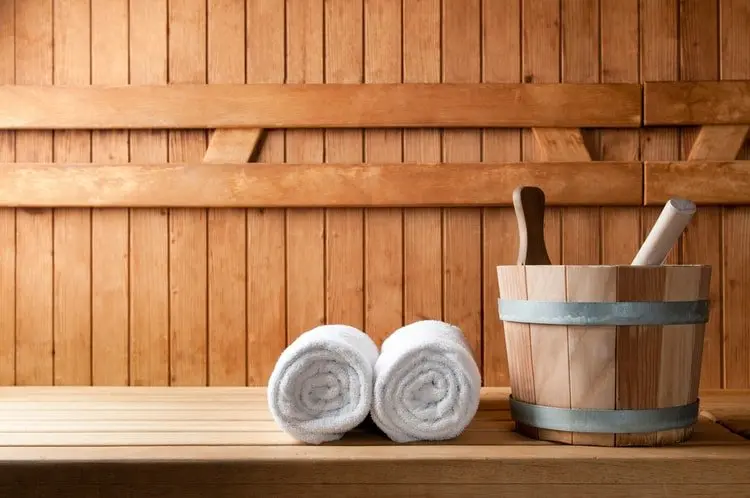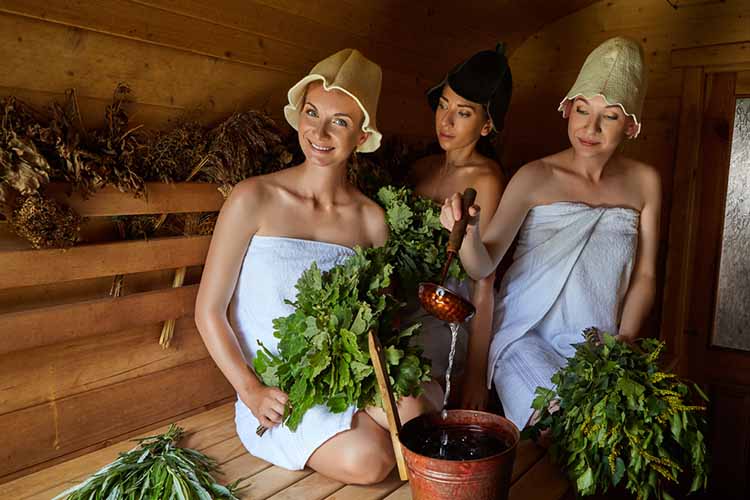Saunas have been used for centuries in different cultures and are now popular across the globe. They can be found anywhere from a gym to a hotel to a lakeside cabin. They are a great way to unwind and relax and also provide many health benefits. Sauna bathing is also used as a way to socialize and connect with friends and family – or to go solo and find some much-needed stillness in our busy world.
Historical background of Saunas
The oldest saunas trace their roots to Finland where sauna culture is still a way of life – not only for bathing and health benefits -but also as a way to socialize, do business, or even to seek stillness and solitude.
Historically, saunas were created from pits dug in a slope in the ground for households during the winter season. The sauna comprised a fireplace where stones were exposed to heating at immense temperatures. The initial Finnish saunas were referred to as smoke saunas. Smoke saunas do not have a chimney and allow smoke to fill the entire sauna room. When the room reaches the desired temperature, the fire is extinguished or left to die. The smoke is then ventilated out of the room and the sauna retains the heated temperature.
As a result of the industrial revolution, the traditional sauna morphed into a metal woodstove with a chimney. When the Finns migrated to other areas in the world, they brought their sauna designs and prevailing traditions.
In a traditional sauna, water gets thrown on hot stones to generate steam and provide a sensation of intensified heat. In a traditional sauna, a session in the heat is usually followed by a cold plunge in a lake, a roll in the snow, or a cool shower. The routine can be repeated multiple times until the body is thoroughly relaxed. The body should cool down at the end of a sauna before dressing.
What is a traditional sauna?
The traditional sauna room is made from wood, often cedarwood, which emits a lovely scent. The room is typically heated to anywhere between 70 degrees and 110 degrees. When the desired temperature is achieved, bathers sit in the heated room and relax. Water is then poured onto hot sauna rocks to create steam.
Traditionally, saunas are heated by a wood-burning stove which takes some time to heat the room and is part of the ritual. While electric saunas have become more popular, traditionalists would consider the wood-burning stove the classic way to sauna.
When the steam and heat become hard to bear, sauna bathers jump in a cold lake, roll in the snow or take a cool shower depending on the situation.
This routine is generally repeated as often as you wish until you feel complete. Allow the body to cool at the end of the sauna routine so as not to overheat before dressing. Following the sauna, bathers will stay hydrated and then enjoy a cold beer and a snack.
Aromatherapy is a popular addition to the sauna experience although traditionalists stick to nature, In Finland, a bunch of birch leaves tied together (called a ‘vasta’ or ‘vihta’) are used to beat the skin. It may sound strange, but try it and you’ll find yourself with smooth glowy skin and other benefits including improved circulation and alleviating pesky mosquito bites.
How to Use a Traditional Sauna
- Before entering a sauna, take a shower with soap and then dry the body completely
- Let your body warm up in the sauna for about 10 minutes prior to adding steam
- Add water to rocks to create the amount of steam you (and fellow bathers) desire
- Repeat adding water as often as you like
- When you’re too hot, leave the sauna room and cool off in the fresh air or shower
- Remember to continually hydrate your body with fresh water
- Re-enter the sauna for another round(s)
- Cool down in a lake or by rolling in the snow (or take a cool shower)
- Allow your body to cool completely before dressing so as not to overheat
- Relax after sauna
- Drink plenty of water accompanied by a light snack before consuming alcohol (Finns traditionally enjoy a beer or cider after a sauna but there are no rules)
Health benefits of a traditional sauna
Regardless of what type of sauna you use or how hot and steamy it is, the health benefits of regular sauna bathing are well documented. When you sit in a sauna, your heart rate rises, and blood vessels vasodilate. Your muscles also unwind and relax. Physically, nothing is more energizing than a good sweat for your body and soul.
The heat and humidity of a traditional sauna provide many health benefits including:
- Easing or suppressing pain
- Reduction of stress levels
- Cleanses skin disorders
- Eases Asthma
- Flushing of toxins through sweating
- Aids sinus congestion
- Helps in recovery after an intense activity
Sauna Etiquette
If you’ve never been to a sauna and aren’t sure what the etiquette is, it’s best to ask your hosts to make sure you have a comfortable experience.
Being in a small, humid space with other users requires some etiquette guidelines – here are some do’s and don’ts.
- While traditionalists often sauna in the nude, that’s not always appropriate! Check with the spa or your hosts regarding clothing policies.
- Take a shower prior to using a sauna to keep your skin clean and fresh – the sauna itself is not for bathing
- Avoid wearing jewelry because it can absorb heat and become uncomfortable
- Keep yourself hydrated to avoid any symptoms of dehydration
- Be respectful of your fellow sauna bathers when it comes to conversation – they may be looking for peace and quiet
- Keep the door closed when entering and exiting the sauna to avoid the heat escaping
- Choose your seat – those nearest the door and on the lower benches are generally cooler than the top ones
- Leave your electronics out of the sauna – they can be damaged by the heat and steam besides annoying other bathers
- When in doubt, ask about sauna policies to ensure a comfortable and relaxing sauna
There is nothing quite as magical as a traditional sauna – especially if you are invited to join one at a beautiful lake where you can take a refreshing dip in between sessions and soak up nature. Regardless of where and how you take a sauna, there are many health benefits to regular sauna bathing.
As we move through our busy daily lives, it can offer a pampering retreat where you can relax as well as restore your body and soul. It’s no debate that sauna bathing makes you feel better and enhances your well-being.
If you haven’t experienced a traditional sauna, there is nothing quite like the feeling of bliss that your body and mind experience afterward.




